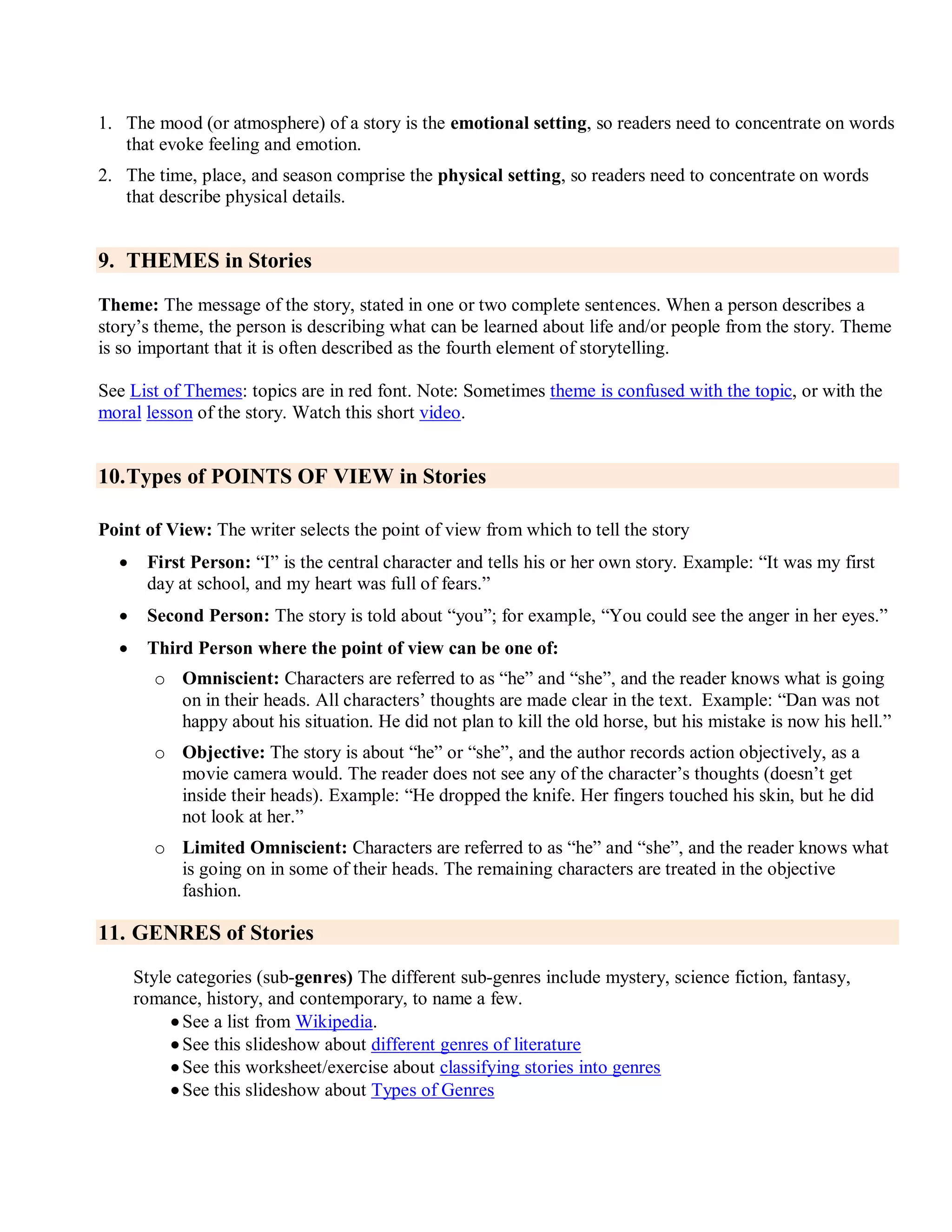This document provides an overview of key literary elements and terminology used in analyzing stories, novels, films and plays. It discusses the seven main types of conflict, three categories of characters, six ways of analyzing characters, six common plot structures, six types of endings, and various plot devices. It also covers setting, theme, point of view, and different genres of stories. The document serves as a reference for understanding the fundamental components of narrative works of fiction.
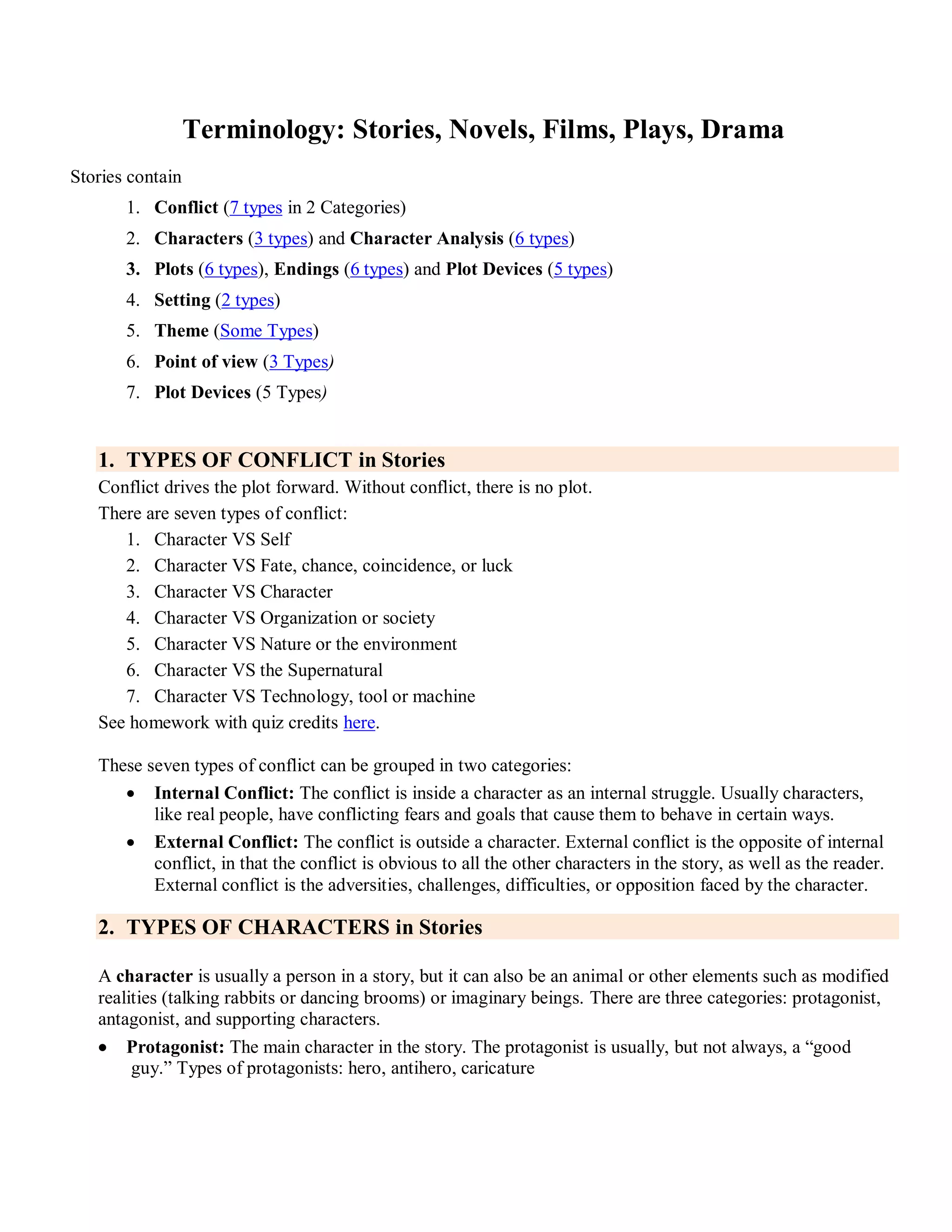
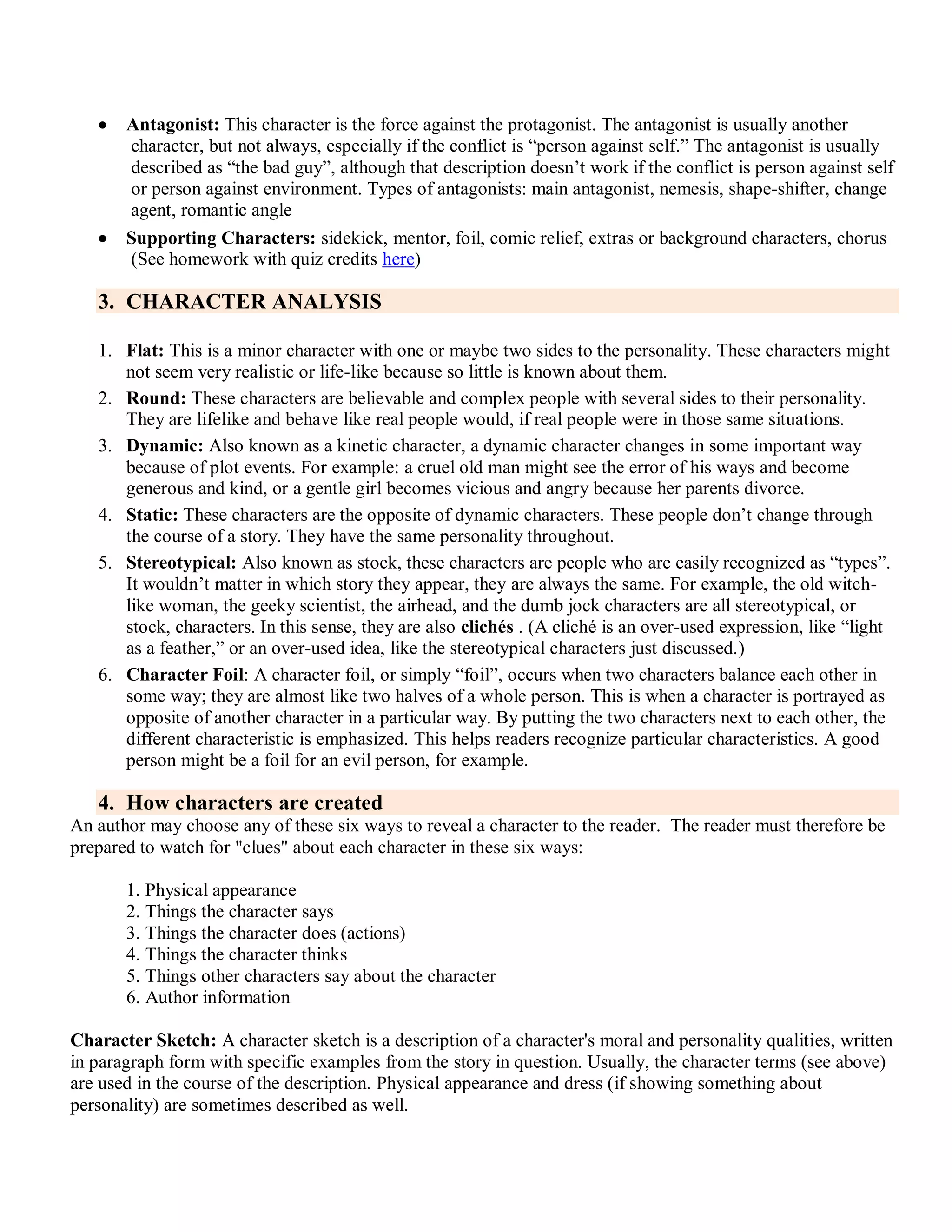
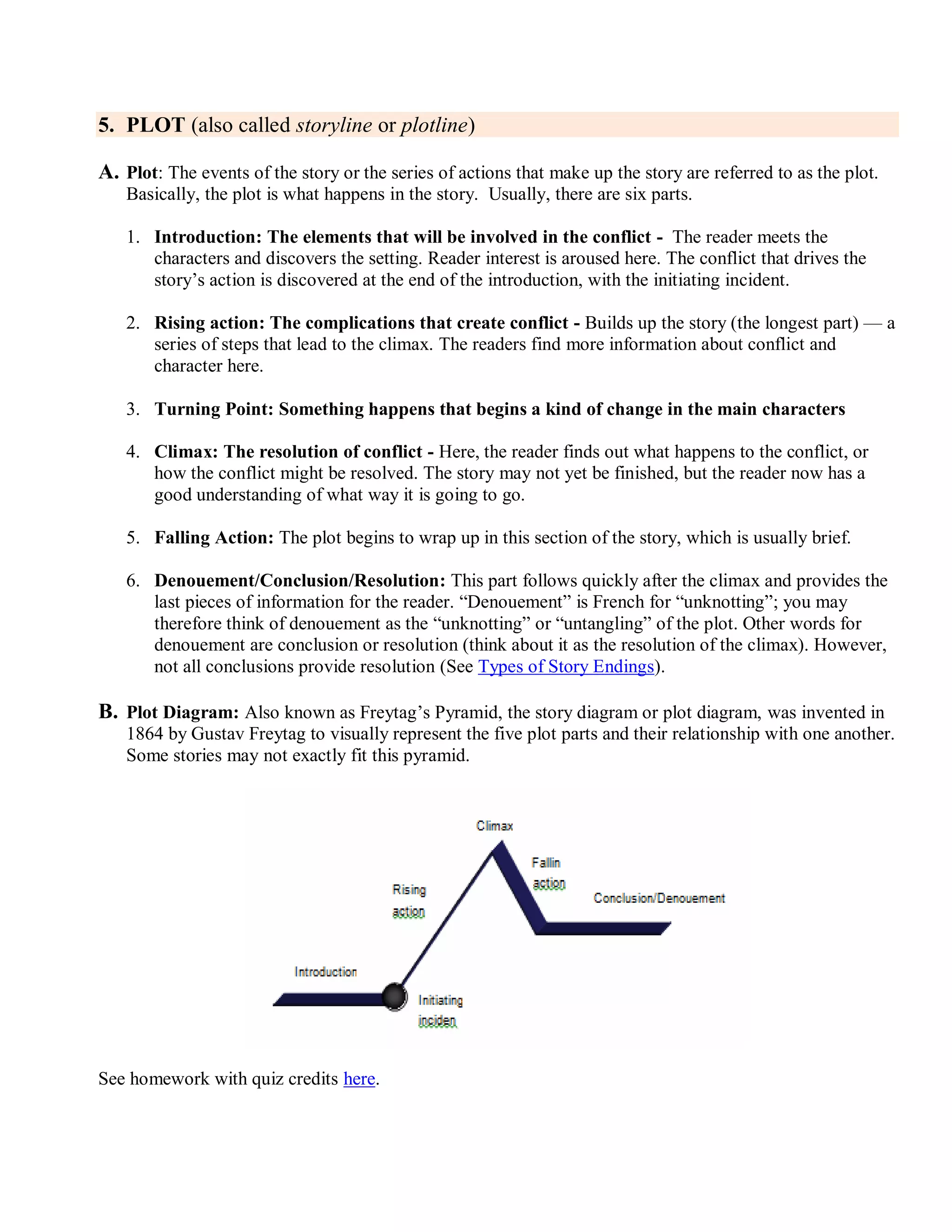
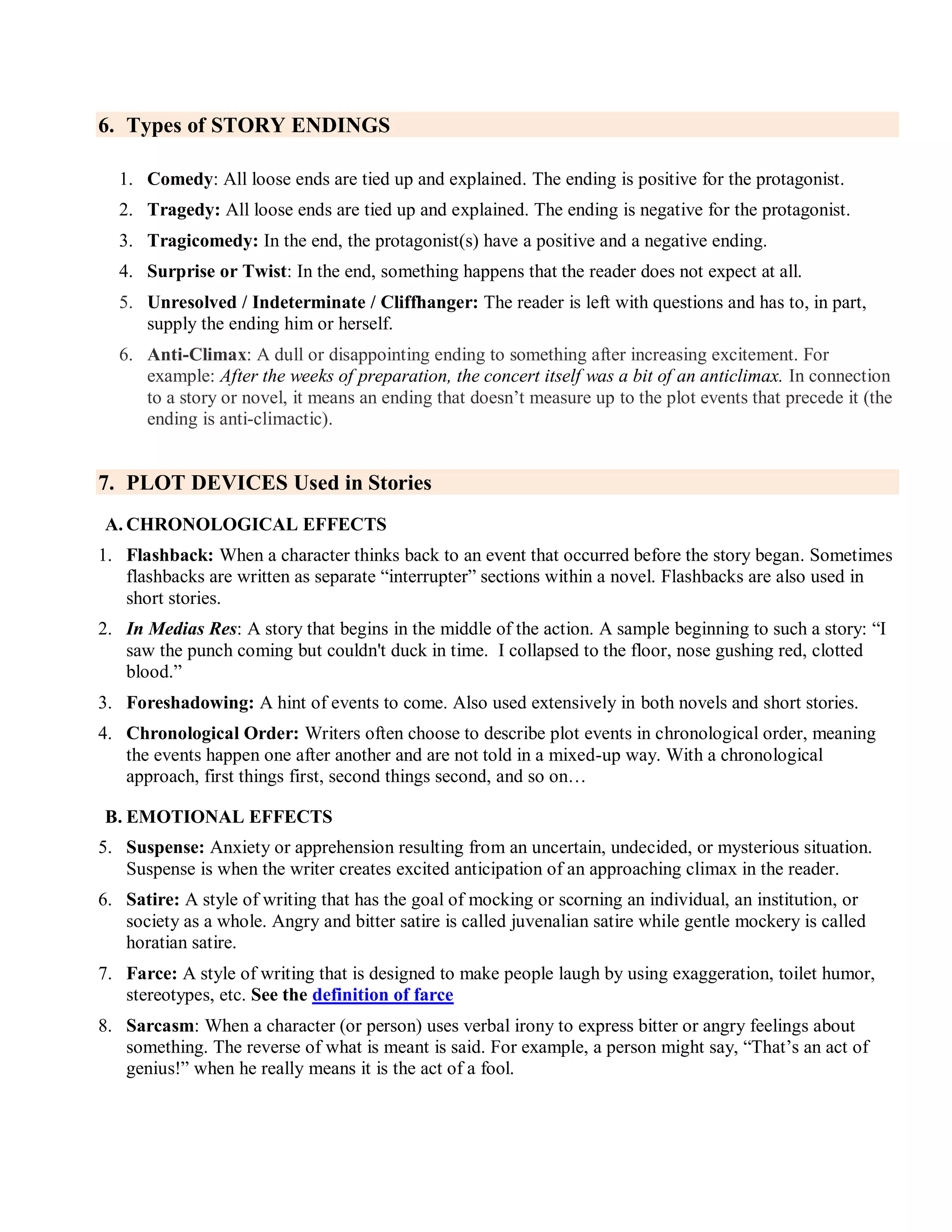
![9. Antithesis: The use of contrast, or opposition, for effect. In creative writing, antithesis is a rhetorical
device where a sentence or two contains a balanced contrast of ideas, so either the two halves of a
single sentence, or the two sentences placed side-by-side, show complete contrast for powerful effect.
For example, ―Give me liberty ,or give me death!‖
10. Irony: There are three different kinds of irony.
Verbal irony occurs when the opposite of what is said is actually meant (sarcasm is an extreme
form of verbal irony).
Situational irony occurs when an event occurs that is the opposite of what was expected by the
character and/or reader.
Dramatic irony is when a character says something, but the audience/reader knows more than the
character does about other characters or events, so the statement comes across with a double
meaning that the audience/reader ―gets‖ and the character doesn’t.
Symbol: A symbol has two levels of meaning: a literal level and a figurative level. Objects, characters,
events and settings can all be symbolic in that they represent something else beyond themselves. E.g.
the dove is literally a bird, but it has become a universal symbol of peace. The collection of symbols in
a novel or short story is called symbolism.
C. LOGICAL EFFECTS
11. Paradox: A statement, person, or situation that seems to be contradictory or opposed to common
sense; it is an unusual pairing of non-matching (incongruous) ideas. Authors use paradox to provoke
insight, so while a paradoxical statement appears to contradict itself, it often, on closer examination,
reveals a truth. In Shakespeare’s Romeo and Juliet, for example, Juliet paradoxically refers to Rome as
her ―only love, sprung from [her] only hate.‖ ―The child is the father of the man‖ (William
Wordsworth) is also a paradoxical statement.
12. Deus ex Machina: From the Latin "god out of the machine." This device refers to any artificial
device that is not a natural extension of the plot that allows for an easy–and unbelievable—resolution
of conflict. Deus ex machina is an improbable plot event.
13. Direct Presentation: Writers who provide information directly to their readers are using direct
presentation. Readers can locate specific information about a character, for example, by finding it right
in the text.
14. Indirect Presentation: Writers often choose indirect presentation in order to inform their readers
about their characters or other story elements. Indirect presentation of information requires readers to
use their inference skills, as the specific information is shown rather than told to the reader.
15. Narration: Something that is narrated—an account, a story, a novel–is a narration. Actually telling the
story via the process of narrating is also narration, so ―narration‖ is a verb as well as a noun.
Narrator: The teller of the story or the person speaking in the story.
8. SETTINGS of Stories
An author may choose to state the setting clearly or leave it to the reader to infer from textual clues (such
as weather).
There are two parts to a complete setting: emotional and physical.](https://image.slidesharecdn.com/introductiontonarrativeliteraturestoriesguide-150627204044-lva1-app6892/75/Introduction-to-Narratives-Stories-A-Guide-5-2048.jpg)
